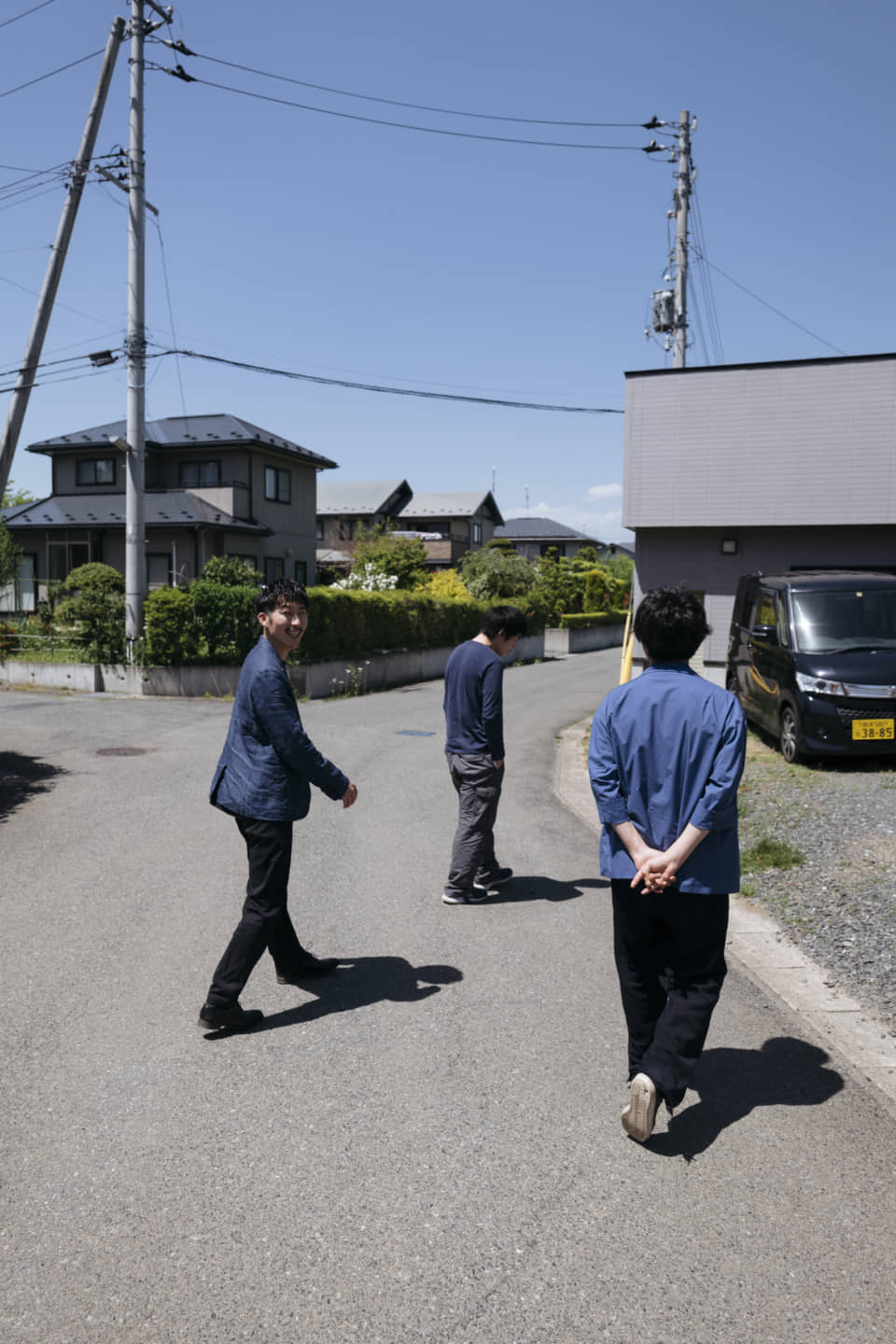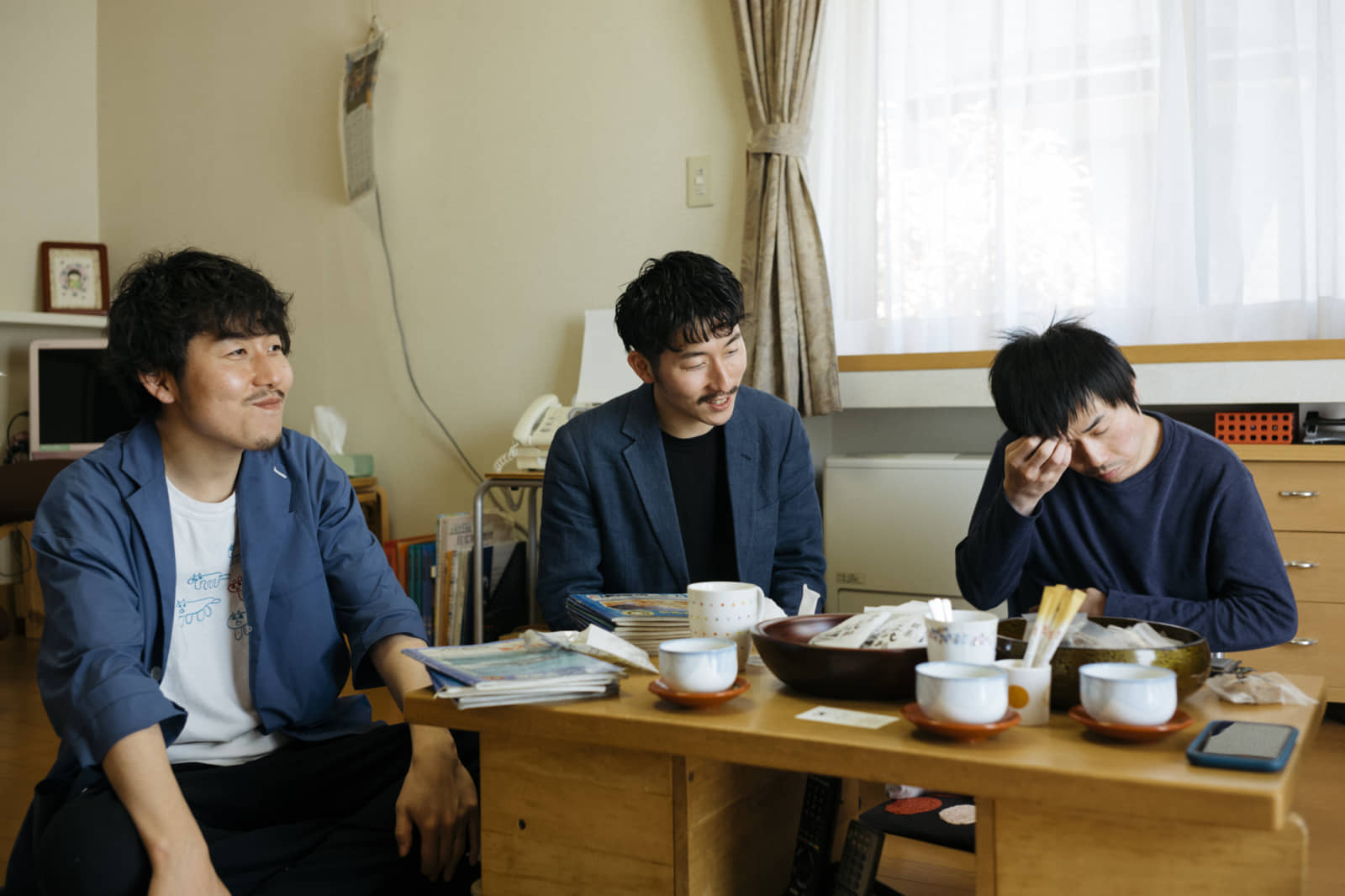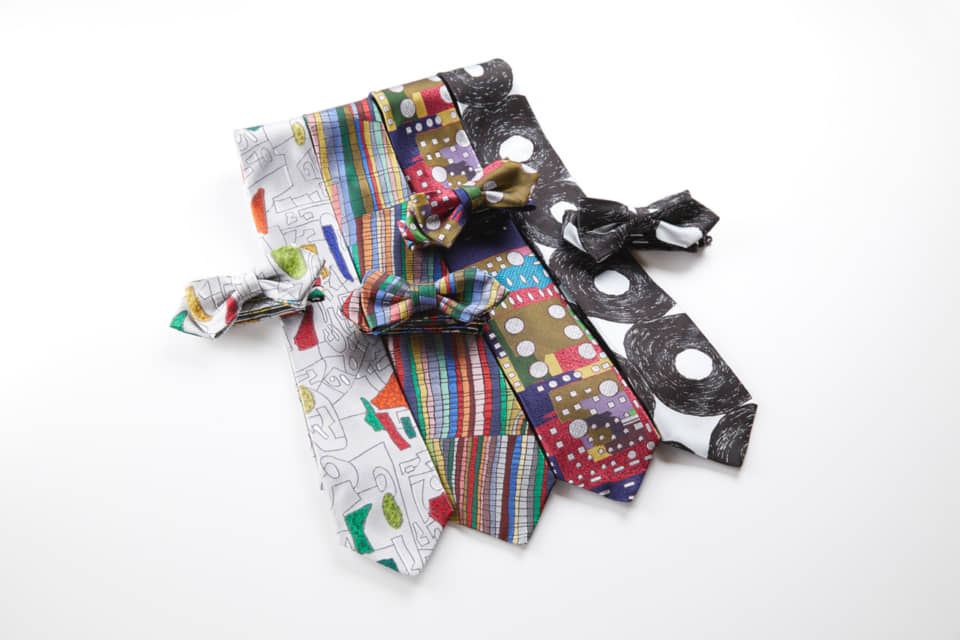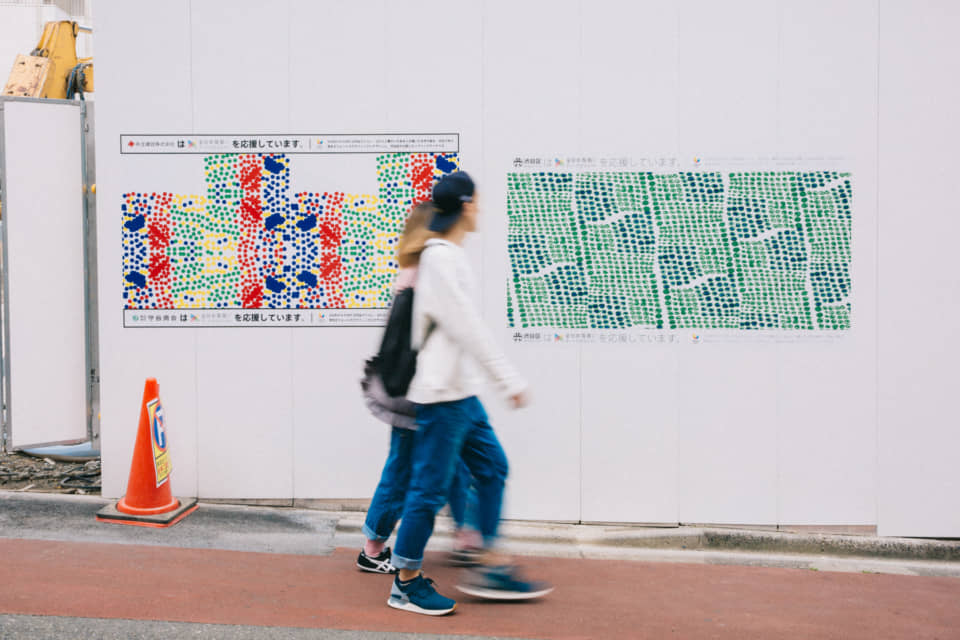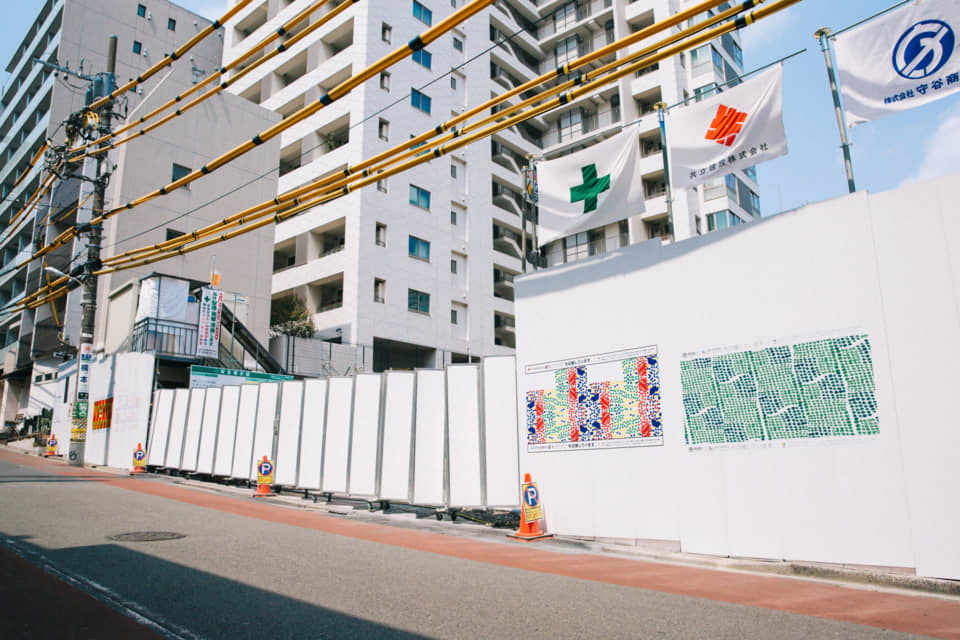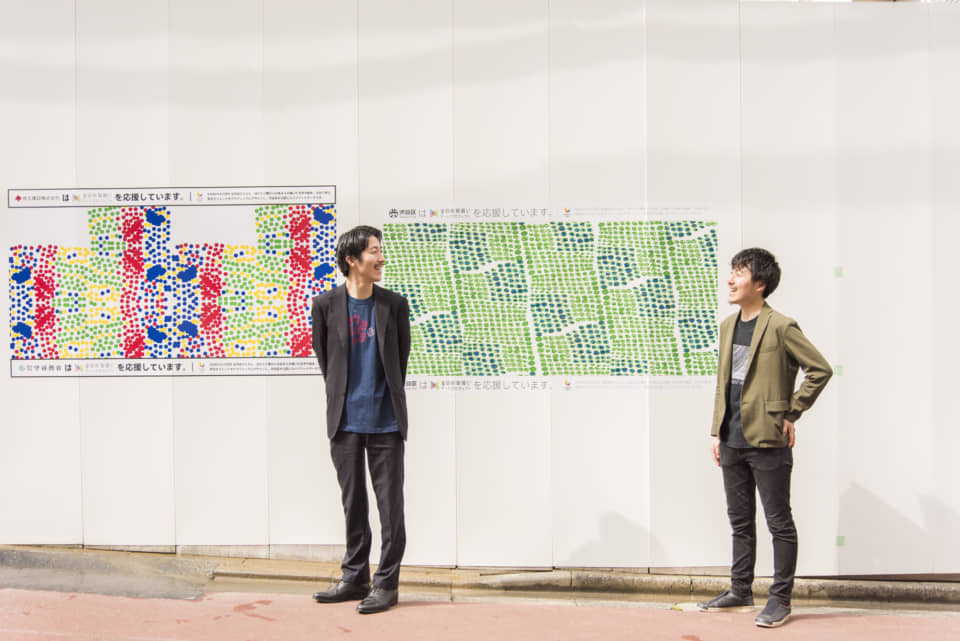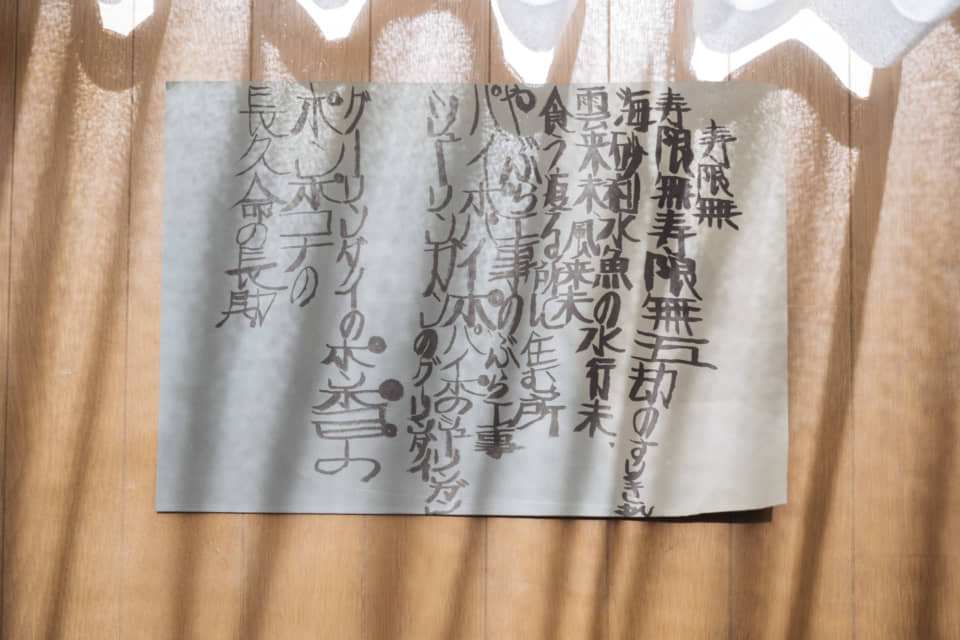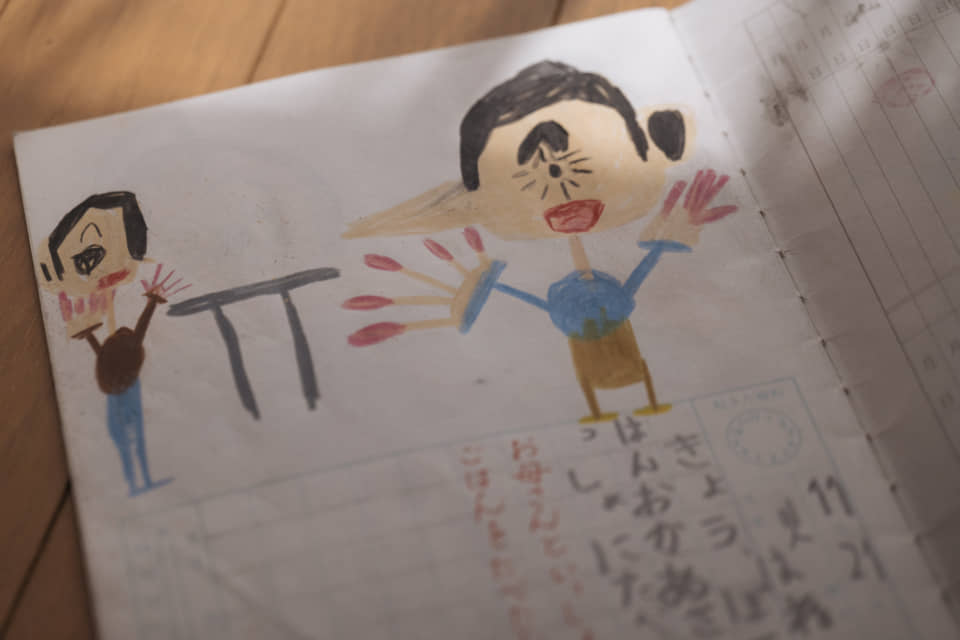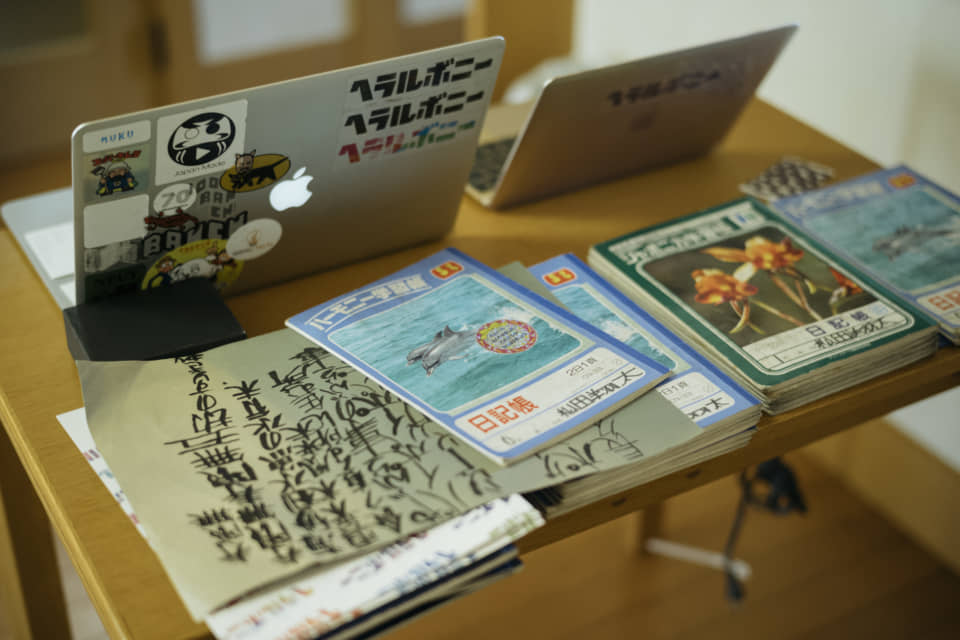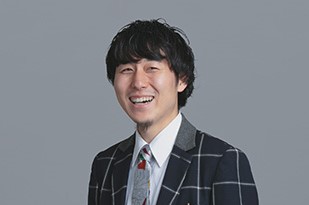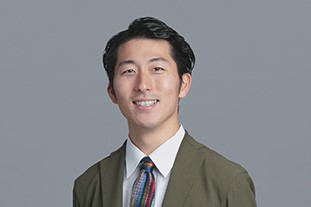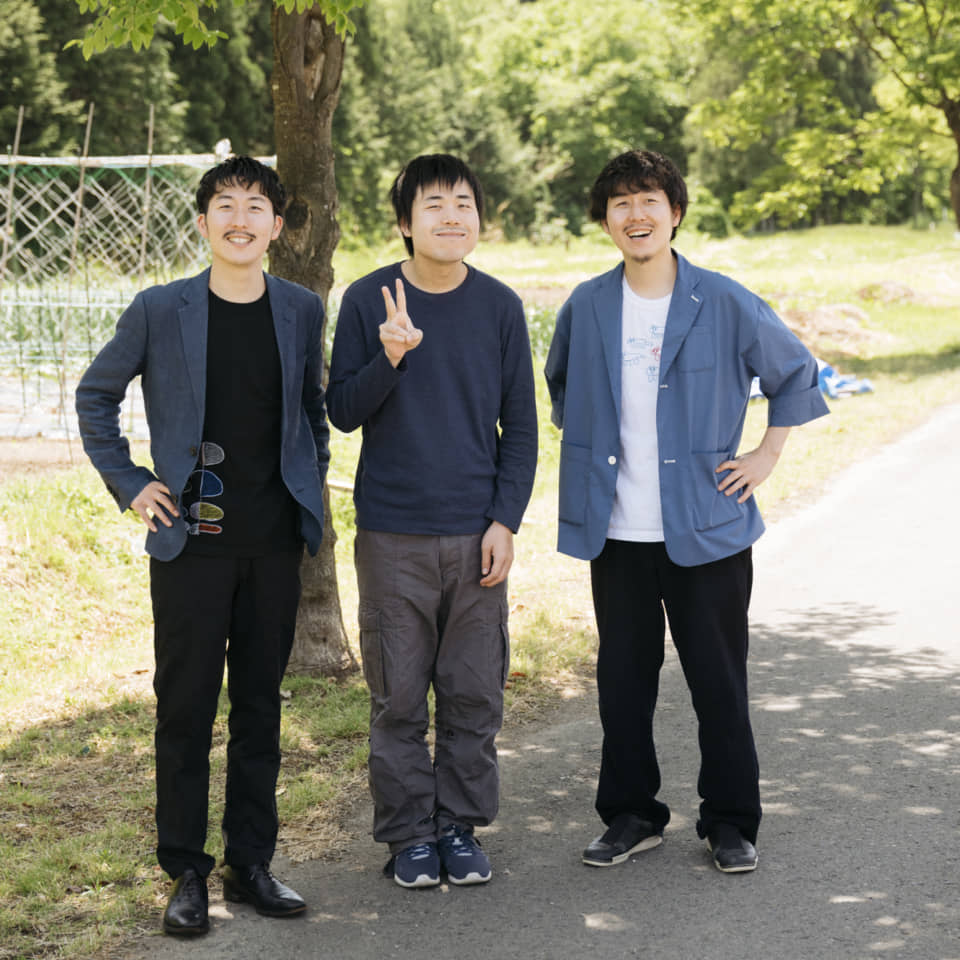
From left to right: Fumito Matsuda, the eldest brother Shota, and Takaya.
Caring about a bother with autism led to starting a business
When we contacted HERALBONY’s CEO Takaya MATSUDA for an interview, he replied: “Can we talk with our autistic brother at our home in Iwate?” Takaya hoped to convey a more intimate story by including his brother, Shota who was their inspiration to start the company.
When we visited their home in Iwate, Shota was lying down at his favorite spot in the living room. However, as soon as he saw the interview crew, he became nervous and retreated into the backroom. Takaya laughed and said: “He will come out later.” Currently, Shota lives here with their parents.
–How do you divide your roles within HERALBONY?
Takaya: I used to work for an advertisement company, so I mainly take care of the creative side.
Fumito: I used to work for general contractor, so I manage the project planning, operations, and sales.
Takaya: Within HERALBONY we have several projects – HERALBONY that makes products from artworks, Japan Karigakoi Art Project that exhibits artwork on the walls of construction sites like a museum, Miraigengo that creates new ways to communicate beyond differences between communities. We are also planning new projects.
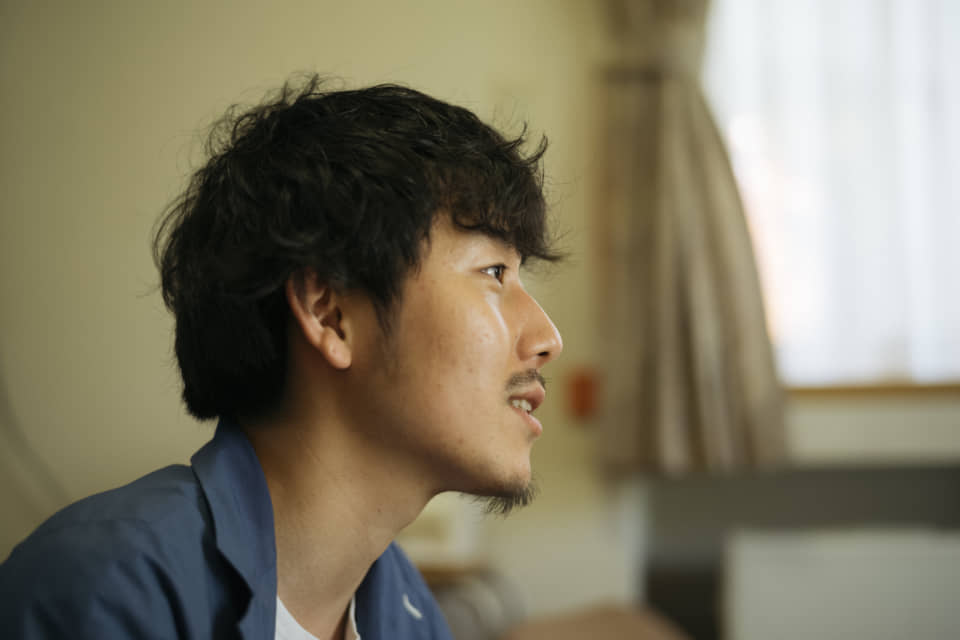
Takaya, CEO of HERALBONY, became independent after working for an advertisement company. He is the younger of the twins and is living in Tokyo.
–Is there anything consistent between these various projects?
Takaya: We have a slogan: “Let out your exceptionality.” We often collaborate with people with intellectual disabilities.
We think that “not being normal” can also be a possibility. There are worlds that can be drawn and work that can be done because of intellectual disabilities. We try to level with what people with disabilities can “uniquely do” and create a system to make money. Of course some people see this to be controversial.
–So, you try to support and “let out” the possibilities of people with intellectual disabilities into the world?
Fumito: Yes. The name of the company HERALBONY is taken from a word our brother Shota wrote in his notebook when he was a child. When we found this word and asked him what it means, he just said: “I don’t know!” [Laugh].
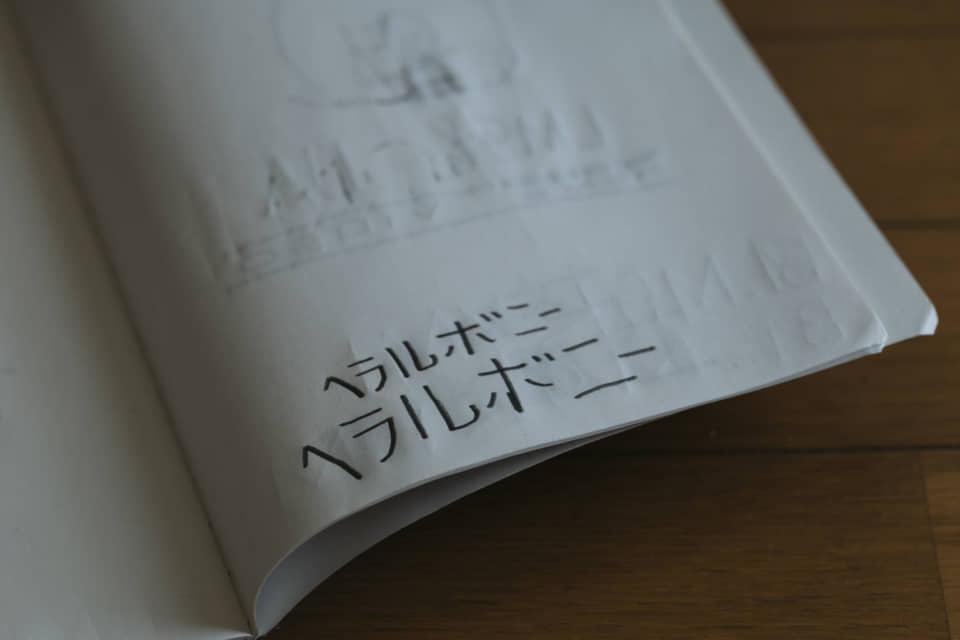
The word “HERALBONY“ written with strong strokes. This became the name of the company.
However, this word was not just random but it reappeared in several of his notebooks. I think that my brother found something interesting about it and wrote it down. Things that my brother finds interesting are often difficult to communicate with others. We think that we can bring this “difficult to communicate” part to the world through the process of producing and editing.
–HERALBONY promotes unique company mottos such as “expanding the area of welfare”, “think with the various perspectives”, and “stick out creatively.” Is making products and design the main business?
Takaya: I used to work in advertisement and some of our staff members used to work for large ad agencies or are designers. Many have worked in creative fields. I think the strength of HERALBONY is that we bring “creativity” to the world of welfare.
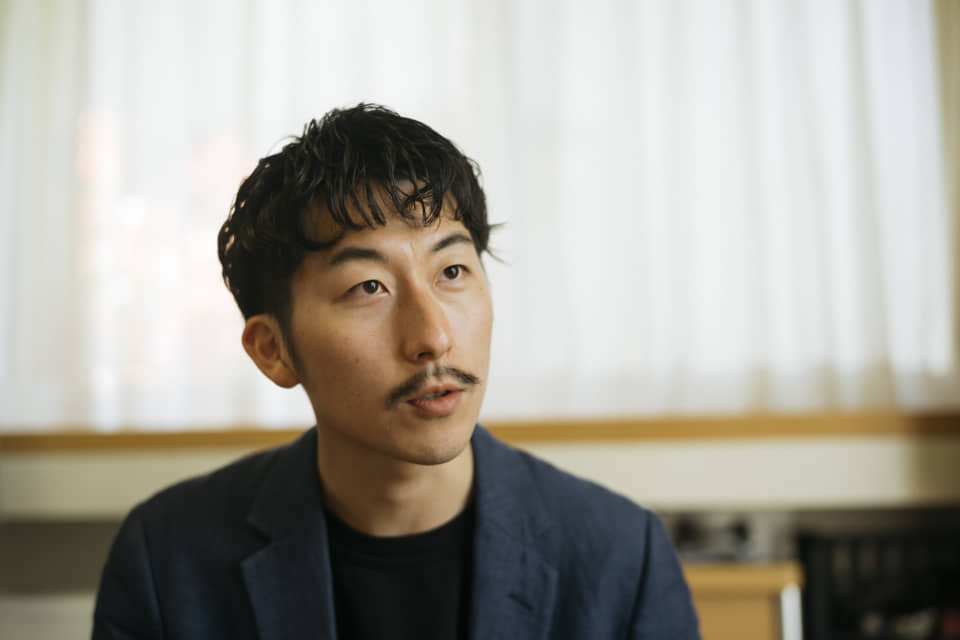
Fumito, COO of HERALBONY, used to work for a general contractor before taking his current position. He is the older of the twins and lives in Iwate.
We want to establish a culture where money can be contextualized within art.
–Why did you start a “company” and not a NPO or social welfare foundation?
Fumito: We insisted on a “company.” We could have become an NPO or a social welfare foundation but these are easily affected by funding systems. Of course, we are not denying support from NPOs or the government, but we thought that we first needed to establish a company that was sustainable and independent. Through a profit pursuing company, we wanted to establish a culture where money can be contextualized within art without relying on government systems. That’s why we are adamant about being a company.
Takaya: It’s been a year since we founded the company. I sometimes question if we are able to be consistent with our goals. As a result of putting our mission and values out into the world, colleagues have gathered as if they were characters in the manga “ONE PIECE” [laugh]. We strongly believe in trying to change the perception of people with disabilities by creating opportunities for people to learn about their artwork. If the perception changes, then legislation will change too. Prejudice and discrimination will not change over night, and we want to create opportunities to think about these issues too.
–We heard that your brother played a significant role in establishing HERALBONY. What kind of prejudice from society did you feel towards your bother who lives with an intellectual disability?
Takaya: Yes, when we would go outside with our brother, we were sometimes nervous about how people saw us. Although we would like to think that “we should not be biased towards anyone”, I think there is a common reaction and there are tendencies to discriminate within most people.
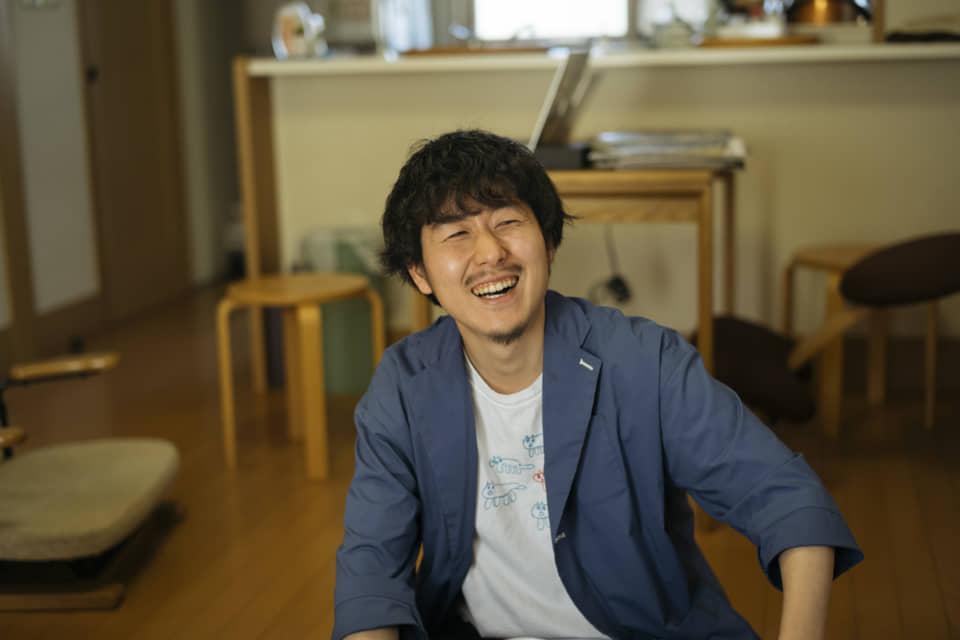
For example, at the Lumbini Art Museum (Hanamaki, Iwate) there is a workshop where artists with disabilities make artwork. One time we decided to visit there with one of our clients. On the way, our client was a little anxious, perhaps from a prejudice towards people with disabilities that they may do unexpected things. However by the end of the visit, our client was shaking hands with the artist [laugh]. I hope through the context of art, people can learn many things and will be encouraged to look deeper into such issues.
Fumito: When we started the company our parents were very worried. Our father works for a bank and he said: “You won’t be able to get a loan” [laugh].
Takaya: I really wanted to do it. It excites me. I remember when I was in middle school, someone who was teasing my brother and it made me so mad. About 3 years ago, our mother said: “there is a really nice museum in Hanamaki.” That’s how I found out about Lumbini, and I was very impressed by the artworks made by artists with disabilities. After that I learned about art fields such as Art Brut and Outsider Art.
Products that could be sold at high-end department stores
–We saw neckties made by HERALBONY at the Lumbini museum. The price was more than 20,000 yen. It was not very affordable, but what is the intention for such high pricing?
Takaya: We set out to make products of the highest quality, even if the price was expensive. One time I found a leather craft work made by an artist with a disability. When I asked the staff about it, they told me that the artist worked very hard and it took 5 hours to make. The price was 500 yen! It was not only cheaper than hourly wage but barely the price of the raw material. I am sorry, but everything about this was wrong, from the packaging to the price. It was not about the quality of what the disabled artist delivered but the lack of sensibility of the people who produced it that resulted in 5 hours of labor only costing 500 yen.
The price setting for HERALBONY products is a statement against such situations. We want to be a respectable brand that makes high quality products that could be sold at a high-end department store. When we requested to use a painting from Takashi ITAGAKI who organizes Lumbini Art Museum and talked about how we felt, he took it very sincerely and said: “I feel your passion and can feel how much you care about your brother.” He was very sympathetic and told us “let’s do something together.” That was the beginning of HERALBONY.
–Objectively speaking, how do you think HERALBONY is received?
Takaya: Thankfully we are invited by various places. In May 2019, we participated in an event at the prime minister’s official residence titled: “A gathering with Abe prime minister and people with disabilities.” HERALBONY neckties are made in collaboration with “Ginza Taya”, which is an old store for men’s clothing, and to our surprise many politicians were regulars there.
Fumiya: They responded to our products positively because of this, saying: “Oh, this is Ginza Taya” [laugh]. We showed them the original artwork and explained the story behind.
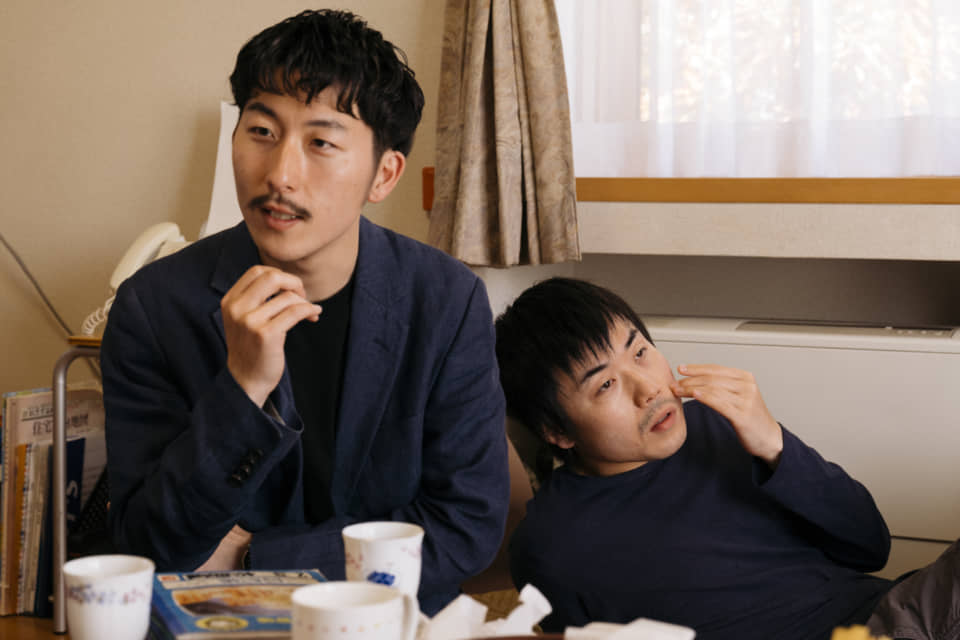
Takaya: When we had that conversation, there were many artists from Lumbini Art Museum at this gathering. We were nervous because in front of us was the prime minister of Japan and other politicians as well. But for people with disabilities these things don’t matter. One of them went up to the prime minister and said: “Hey brother, buy this!” [Laugh]. Abe was very kind and was pleased by this interaction.
The prime minister was laughing to being called “brother” [laugh]. We were nervous but the artists made us smile. They are not interacting with “Abe the prime minister” but just as a person. They are not biased at all.
Fumito: This is also where we have to be careful about. When we organized a tour to the Hajimari Art Center (Inawashiro, Fukushima) with fans of HERALBONY, on the way home they became fans of the artists and were all in praise saying: “W is so great” or “T is amazing.” It made me realize that as viewers, we have to interact with these artists as individuals as well.
Takaya: For HERALBONY we list the names of all the artists. Satoru KOBAYASHI’s product will be named as “Satoru Kobayashi.” We want fans of the artists more than of the brand. We want people to buy the new work of Kobayashi’s because they are “fans of Kobayashi.”
To feel that there is a potential “market.”
How do you make products?Can you tell us the process?
Fumito: We are introduced to the artists, and if we like them we sign a contract and photograph their work to archive it. Afterward we think about how to use it. The contact is formally signed between the supporting facility for people with disabilities. To put it simply, we are like an agency for the artists and the supporting facility.
Takaya: Basically in the contract we make it so that the money will be paid to the artist, but sometimes it is problematic for just the people who make the art to be paid. On occasions the money is used for the supporting the creative activities or to cover the difference in wage at the facility that the artist is part of. Eventually I hope we can create a system that can enrich more broadly.
Fumito: We have pursued projects with the belief that maybe art is useful in changing the perception in society. We hope in the future we can do things other than art, like creating services for social welfare foundations.
–Select shops and museums around the world now carry products by HERALBONY. Do you feel a change surrounding these issues?
Takaya: When we talk to people who come to our lectures, their response is always positive and they tell us that their view on people with disabilities has changed through the artwork.
Fumito: I think it would be good if we started to see competitors. This would make it feel like there is a potential market. I hope that the culture of people with disabilities will be widely recognized. Places like Shobu Gakuen (Kagoshima) and Atelier Yamanami (Koga, Shiga) are very different styles to HERALBONY but we are really inspired by them.
Takaya: HERALBONY is generally still unknown. We have to try harder. I hope we can run more projects other than HERALBONY and become a company that has an impact to society. HERALBONY is “company” in order to show people that this can be a business.
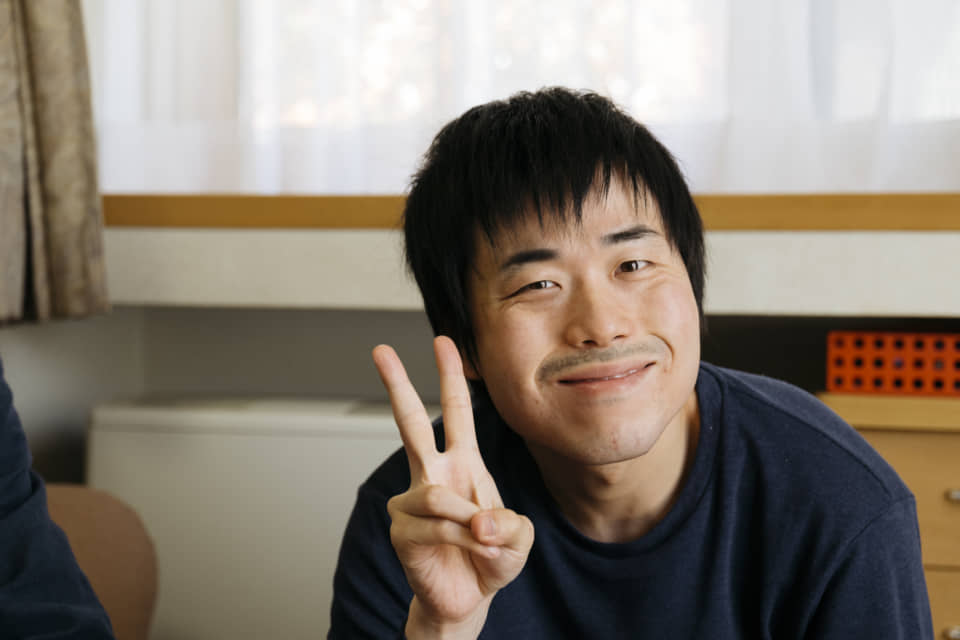
Shota came back to the living room towards the end of the interview. When we pointed the camera he immediately made a V-sign.
The exceptionality that the 3 brothers let out to the world
Towards the end of the interview, Shota came back to the living room and sat with us. He ate a snack and drank tea. Sometimes Takaya and Fumiya would touch Shota while they were talking. When the 3 brothers are together the atmosphere becomes very warm.
After the interview we decided to take a photo outside. When the camera pointed to Shota he smiled with a V-sign. Fumiya laughs and says: “That’s our brother’s signature pose.” Shota smiles in response to the laugh. And we laugh together. This was the multiplying effect they had on each other that made the interview full with laughter. The 3 brothers from Iwate will continue to be exceptional.
